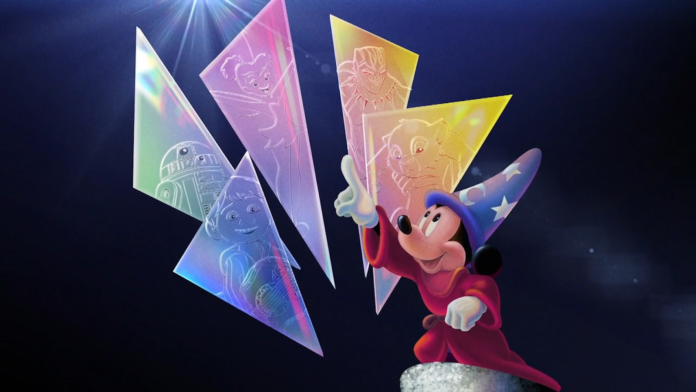Speaking of the exhibit, you mentioned in an interview while promoting “Adventure Through The Walt Disney Archives” that storytelling is at the core of everything you do. How do you go about deciding which pieces fit into the story you’re telling in an exhibit like this that is meant to span the entire history of the Walt Disney Company? For example, why display Captain America’s shield from “Captain America: Civil War” versus the one from “Captain America: The First Avenger” or “Avengers: Endgame?”
We’ve been working on this exhibit for over four years and that was the very first thing that we had to figure out. We’re telling a story that’s 100 years of history in 15,000 square feet. How do you do that? The other thing is to know your audience. We had to know that we’re going to have everybody from two or three-year-old toddlers to grandparents and great-grandparents, and everybody’s going to want to see the things that are most beloved to them. We don’t want to tell a chronological story because then the older generation sees their favorite things at the beginning and then the kids have to wait until 10 galleries in to see the things that they love on streaming today.
Chronological would be the easiest because you just tell the story in order. But we thought, no, we don’t want to do that. And so we took a step back and we thought [about] what themes, philosophies, and policies has the company used throughout its entire 100-year history. Of course, it started with Walt Disney. We may use new tools and new technologies, but we’re still following Walt’s footsteps. We looked at that and we thought [about] the basic philosophies that Walt Disney used and developed in the ’20s up through his lifetime, ending in the late ’60s, and how have we used those things continuously since. What are we doing today that follows those steps? It turned out that it was very simple, actually.
As you said, storytelling is at the heart of everything we do. So there’s one gallery that’s all about storytelling. It’s a mixture of storytelling from “Snow White and The Seven Dwarfs” up to “The Princess and The Frog,” [then] some of the newer titles that we’re doing. It encompasses not just Disney, but Pixar. And of course, we wanted to give a nod to some of the others. This is mostly about Disney. It’s the anniversary of Disney. But we do want to give some nods to Marvel and Lucasfilm, who also follow the same process. They use storytelling in everything they do.
What we decided to do is have a prologue, which is really exciting. There’s a lot of clips. We have four dozen monitors and there’s about 318 Disney films represented in the exhibit. But we start with a prologue. We go into where it all began and tell the early story of Walt Disney. There are people who don’t know that Walt Disney was a real person, so we tell his story, who he was, and how he started the company in 1923, signing a contract for the Alice comedies. We show some of the silent films and the birth of Mickey and some of the early technology of the [“Silly Symphony” shorts].
But from there, we move right into storytelling. That’s the next gallery. Then every gallery after that represents another philosophy, like the importance of personality in animation and our development of our characters, [or] the importance of music in Disney films and television and productions. The importance of the world around us, how we represent nature, how we show real nature, and how we represent nature in our fantasy and in our films. The importance of innovation — Innovention, as we call it. We represent a day in the park. And then we also want to share the fan experience of what Disney means to the people who have been the most important part of what we’ve done for 100 years [by] bringing alive their memories and explaining how you take Disney home with you by buying a record album, or you go to a movie theater, or you visit one of our parks or one of our live experiences. But we wanted to show it from the audience’s point of view and show how much they’ve loved it over the decades.
Of course, the very last gallery is a look forward and it shows how we’re still doing all of these things that Walt set up in the ’20s. We’re still doing them today and we do them in all of our brands, not just Disney, but in Marvel and Lucasfilm and Pixar, and other brands like ABC and Fox and other things that are a little newer to the company.




